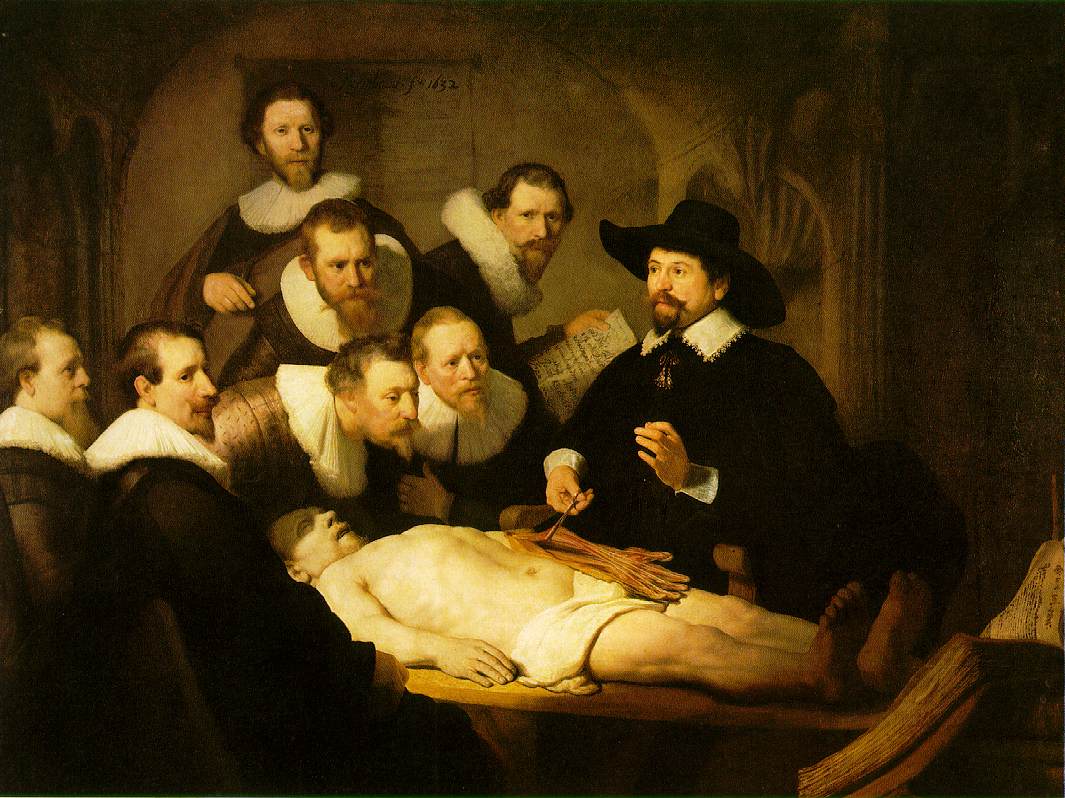Most of our first year curriculum is packaged together into a single course that lasts throughout the fall. This course encompasses biochemistry, molecular biology, and cell biology. These subjects, it can be argued, are important, but they just don't seem nearly as exciting or relevant as, say, cutting someone open and poking at their insides. Right now, all I know about the human body comes from little schematic diagrams in my text book. If ever a patient complains to me that the red Pac-man looking thing in their cytosol has a small blue triangle stuck in it, I might be able to recognize that they've somehow picked up a nasty, constitutively active Ras protein. I could verify this because there'd be a bunch of other colored squares on which the Pac-man would have left a bunch of yellow circles with P's in the middle.
Though all of this stuff seems very abstract (or even completely made up), at least it occasionally has some gravity to it. The first thing we learned was how proteins get folded into their appropriate forms. Proteins are comprised of amino acids linked to one another like beads on a necklace. What makes a protein particularly useful (or deleterious) is the way that it's folded onto itself. As it turns out, small errors in the way a protein folds can produce some pretty taxing conditions. Cystic fibrosis, for instance, results from one protein that's only slightly abnormally folded. The normal protein forms a tube through which chloride ions can roll out of a cell, the defective tube forms a tube through which ions pass a little less frequently. This small abnormality has some tremendous consequences.
The other day, we learned about a misfolded ion channel in muscle cells. In order for muscles to contract, a current runs down the length of a muscle fiber. The current is created by a bunch of charged particles moving from one side of the cell's membrane to the other. However, in a condition called myotonia congenita, patients have a channel that doesn't conduct one charged particle quickly enough. As a result, the cell can't properly compensate when a muscle is quickly and repeatedly flexed, a patient won't be able to immediately relax their muscle.
I tried to imagine the consequences. Would a patient just crumple into a ball and slowly crush his internal organs with his own muscles? If such a person gets too excited, does his heart contract pump all of the blood out, and then sit like a clenched fist in the patient's chest? As it turns out, people with myotonia congenita tend to find it to be pretty obnoxious, but they can certainly lead full and productive lives.
So why, we all wanted to know, is this particular condition included in our curriculum? When are we going to come across it? As it turns out, only about one out of a hundred thousand people worldwide has it, and if they ever walked into my office, there's no treatment I could give them. So where might an understanding of this condition come in handy?
Goat farming. It turns out, myotonic goats can't jump without cramping up and falling over, saving goat farmers a fair amount in the building and maintenance of their fences. Also, these goats are adorable.
Tuesday, November 07, 2006
Subscribe to:
Post Comments (Atom)

No comments:
Post a Comment